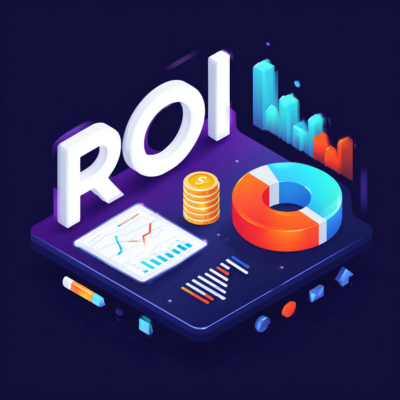
In this blog series, Jason Larson, head of content at IIA, interviews IIA Experts who help clients navigate top data and analytics challenges within their enterprises. With over 150 active practitioners and unbiased industry experts, IIA’s expert community provides tailored support, plan validation, and ongoing guidance to drive key analytics outcomes.
In this Breakthrough Conversation, Travis Grunewald, IIA Expert and senior executive specializing in AI, analytics, data science, and pricing strategy, shares his insights on barriers and best practices in measuring and communicating analytics value. Echoing IIA’s premise in its Practical Guide to Measuring and Communicating the True Value of Analytics, Grunewald challenges organizations to break from traditional finance models when trying to measure analytics and AI value, shares effective methods for capturing analytics value that doesn’t neatly fit into a P&L, and discusses actions D&A leaders can take tomorrow to shift the analytics and AI ROI conversation in their organization.

Beyond ROI: A Practical Guide to Communicating Analytics Value
Take a practical approach to proving ROI on analytics—read our expert designed eBook for a step-by-step guide on communicating the value of your projects.
1) What is the greatest barrier in measuring and communicating analytics value?
One of the biggest barriers I’ve run into is that most organizations default to traditional finance models when trying to measure analytics value. They want hard ROI—dollars in, dollars out—but analytics often delivers value in less direct and still critical ways. Things like enabling better decisions, faster testing, improved customer experiences, or reducing uncertainty rarely get the financial credit they deserve.
What makes it even harder is that analytics teams are often too focused on reporting outputs instead of outcomes. I once partnered with a business unit where we helped revamp their pricing strategy. The dashboards we built weren’t the story. It was that the leaders finally had the tools and knowledge to act decisively. As a result, promotional planning got better, discounting got tighter, and margins improved over time. The value wasn’t in a single ROI number, it was in the shift to a smarter, more confident decision-making culture. That’s hard to quantify, but incredibly impactful.
So, the real challenge is measurement and translation. If your business partners don’t understand how analytics is helping them make better calls, faster, or with less risk, then the numbers won’t resonate. And if your team can’t explain that value in the language of outcomes, not outputs, you end up in a constant cycle of justification.
2) We’ve observed same challenges at IIA time and again. So, what are the most damaging assumptions analytics teams make when trying to “speak the language of the business”?
One assumption I’ve seen hurt teams is thinking that “speaking the language of the business” means dumbing things down. I’ve seen brilliant analyses watered down so much in an effort to sound “business-friendly” that the core insight gets lost, or worse, misunderstood. It backfires because the nuance disappears and the connection to a meaningful business problem is never made. Business partners don’t need less intelligence, they need relevance, context, and clarity.
Another trap is assuming that a well-designed dashboard or a perfect model will speak for itself. It doesn’t. Business leaders need more than outputs, they need a story. That’s where data storytelling comes in. It's not about simplifying the analysis; it’s about telling a clear, concise, and actionable story, framed from the perspective of the business. I worked with one team that built a great propensity model, but we never rolled it out because the business didn’t understand how to use it. It lacked a narrative that connected it to real decisions and pain points.
The best results happen when analytics teams start with a deep understanding of business challenges, then position their work as a solution to those problems, not just as a cool technical accomplishment. When we tell the story well, the insights land, the tools get used, and the value becomes clear.
3) Let’s return to this idea that the default setting for many organizations is to use traditional finance models when trying to measure analytics value. Which non-financial measures have been most successful for you in linking analytics work to business impact?
Great question, because honestly, most of the wins that matter to the business aren’t neatly captured in a P&L.
Some of the most effective “measures” I’ve used include:
- Decision velocity: How much faster are we making key business decisions now? At a retail org, we helped cut the time to approve pricing changes from weeks to days. That’s a huge win when you’re in a dynamic market.
- Testing throughput: Are we running more experiments and learning quicker? At a consumer brand, we worked with the marketing team to ramp up experimentation. We went from one or two A/B tests a month to running several at a time, with faster learning loops. That boosted innovation and learning culture.
- Adoption and usage rates: Are we enabling teams to take action with data they trust? Working with a healthcare company, when we launched a sales analytics dashboard, we didn’t just track log-ins, we monitored how often users accessed key reports, which filters or views they used most, and whether the data was referenced in pipeline and planning meetings. We also asked managers how the tool was influencing decisions, which helped us connect usage to actual business outcome.
In many cases, these signals matter more than a strict ROI number, especially when you're working to build buy-in or change how people think. They help show the broader impact analytics is having across the business.
4) What are the most effective methods you’ve used in combining qualitative anecdotes with quantitative indicators to tell a more complete ROI story?
One of the most valuable lessons I’ve learned came from a project where we were trying to improve conversion among price-sensitive customers. Consumer research revealed that a missing price point was creating a perception barrier and people weren’t even considering us because they didn’t see an entry-level option that matched their expectations. That insight led us to test a simplified offer at no cost, and the early results showed strong growth.
But the numbers alone didn’t tell the full story. After the test launched, feedback from the field started coming in, and it helped explain why the impact was even bigger than we expected. What we learned was that customers were coming in through the simplified offer, but many actually needed more complex solutions and they were getting more value
as a result. That changed how we thought about the offer entirely.
That experience really shaped how I approach impact storytelling today. I’ve learned to blend the qualitative voice of the business, the field, and the customer with the quantitative results. That combination doesn’t just help tell a better ROI story, it gives you a deeper understanding of what worked, why it worked, and where there’s still untapped opportunity. It turns analytics from a report into a narrative that moves people and drives action.
5) Have you ever felt the pressure to generate ROI metrics you don’t believe in due to stakeholder bias or business culture? How did (or would) you handle the situation?
Yes, more than once. It’s tempting to bend the numbers to tell the story leadership wants to hear, especially when you’re under pressure to prove value quickly. But once you lose credibility, it’s tough to earn it back.
What I’ve learned is to reframe the ask. If a stakeholder wants an ROI number that doesn’t make sense, I’ll walk them through why that view may be misleading or incomplete, and more importantly, the risks of relying on it. But I don’t just say “no” to the stakeholder. I use it as a chance to realign around what success really looks like. Then I suggest a different approach, something more relevant to the business and easier to stand behind. The key is helping stakeholders see that we’re not avoiding measurement, but rather choosing a better lens for it.
When you do that, you’re protecting your analysis integrity and you’re building trust. You shift from being seen as a data provider to being seen as a strategic partner. It shows you’re not there to simply take requests, but to add business value and help them make smarter, more confident decisions.
6) What’s one action D&A leaders can take tomorrow to begin shifting the ROI narrative in their organization?
Revisit the last analytics initiative your team delivered and reframe how you communicate it. Tell the story through the eyes of the person or team that benefited from it. Don’t lead with the model, the algorithm, or the dashboard. Build it around the business value it added or unlocked. What decision did it influence? What risk did it reduce? What problem did it solve?
Then share that version of the story with your other stakeholders. Even better, let your business partner tell it. When the people making the decisions advocate for analytics, it changes the game. You don’t need a perfect ROI formula to shift the narrative. You need real examples that make the value tangible and repeatable.

Why Analytics Value Gets Lost—and How to Fix It
Explore our all-in-one resource hub for analytics ROI. Don’t let outdated ROI math understate your impact. Check out our smarter tools and frameworks for measuring value in analytics and AI—aligned to strategy, outcomes, and real enterprise conditions.